Heart attacks: the signs and symptoms and how to prevent the No. 1 killer in the U.S.
Heart disease is the leading cause of death in the U.S., according to the Centers for Disease Control and Prevention. According to CDC statistics:
- In the United States, heart disease claims the lives of about 610,000 people annually, or 1 in every 4 fatalities.
- For both men and women, heart disease is the leading cause of death.
- The most prevalent kind of heart disease, coronary heart disease, claims the lives of over 370,000 people each year.
- Approximately 735,000 Americans suffer a heart attack each year. Fifty-two percent of these are first-time heart attack victims, with the remaining victims having previously suffered a heart attack.
Also read-Enlarged Heart : A Patient’s Guide To An Enlarged Heart And Its Symptoms
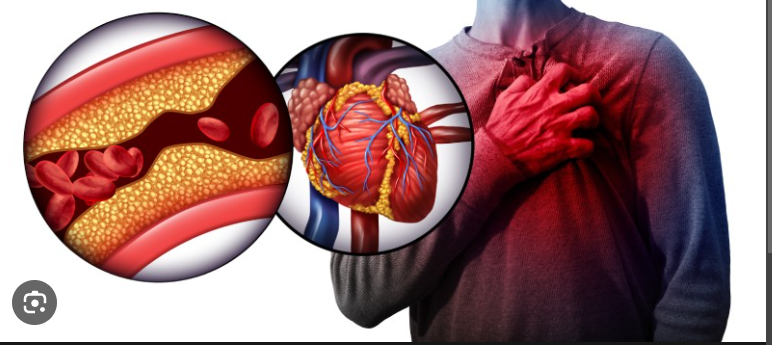
What is a heart attack?
The heart’s job is to pump oxygen-rich blood to the entire body. But the heart itself also needs oxygen to survive. When blood flow to the heart muscle is severely reduced or cut off completely, the heart is unable to function properly. The part that is deprived of oxygen begins to die. That is a heart attack, and according to the American Heart Association, someone in the U.S. has one about every 40 seconds.
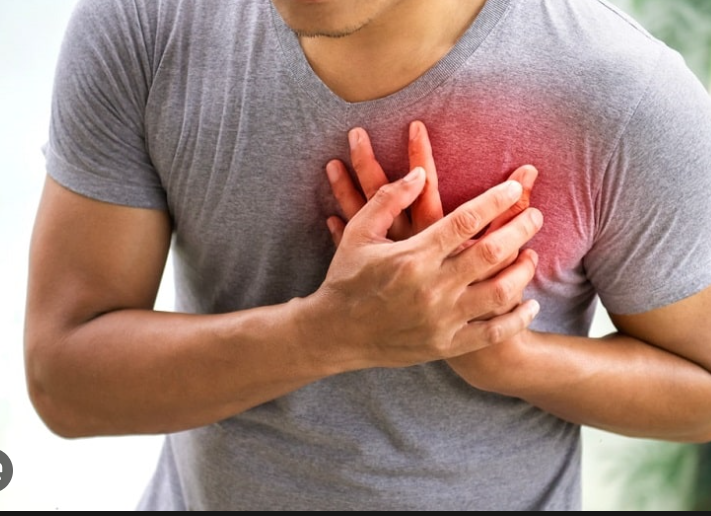
Cardiac arrest vs. heart attack
Although they are not the same thing, cardiac arrest and heart attacks are related. When the heart’s blood flow is interrupted, a heart attack happens. A sudden stop in the heartbeat is known as sudden cardiac arrest. A heart attack is a “circulation” problem, whereas sudden cardiac arrest is an “electrical” problem, according to the American Heart Association.
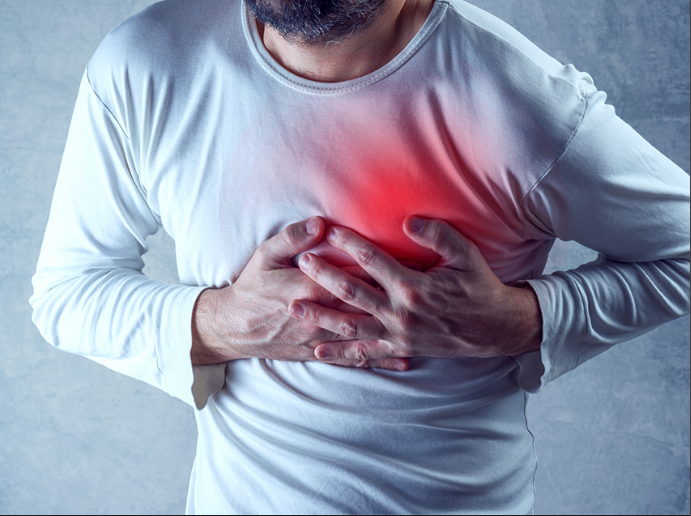
As the name suggests, sudden cardiac arrest happens suddenly and typically without prior warning. A disturbance in the electrical currents that maintain the heart’s beating causes it to occur. The heart’s inability to pump blood to the brain, lungs, and other organs is known as an arrhythmia. The individual may have little or no pulse and can pass out in a matter of seconds. Should the individual not obtain care within minutes, cardiac arrest will cause death.
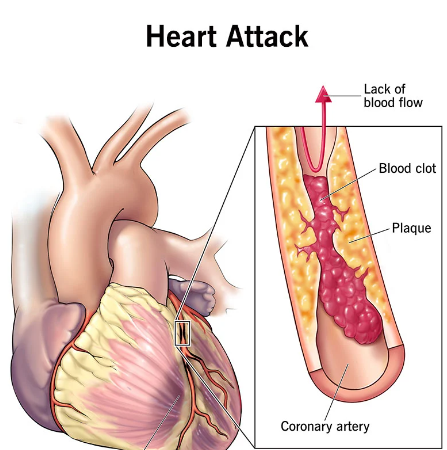
Causes
Blood flow obstruction can occur when plaque, a deposit of fat, cholesterol, and other materials, narrows the coronary arteries that feed blood to the heart muscle. This condition is called atherosclerosis, which is also referred to as artery hardening. The artery may become narrowed by the plaque, slowing blood flow. Occasionally, the plaque cracks and a blood clot forms. The blood flow from the artery to the heart muscle may be totally stopped by the clot.
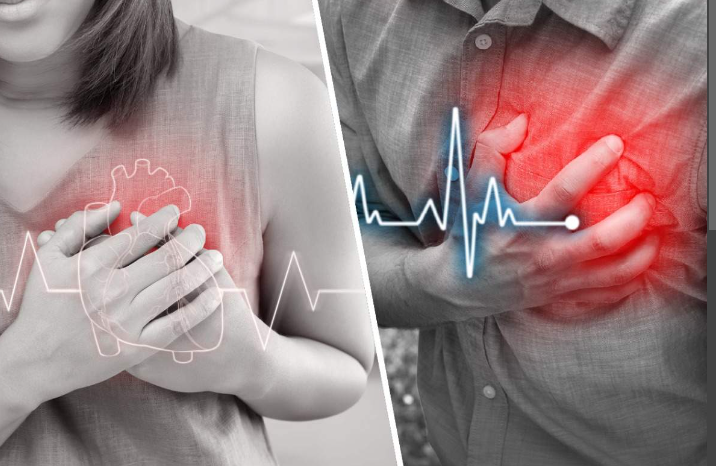
When the heart muscle is oxygen-deprived, the condition is called ischemia. If that leads to damage or death of part of the heart muscle, it is called an ischemic heart attack, or a myocardial infarction.
A blocked artery is not the only cause of a heart attack. A coronary artery may contract or go into spasm, causing the artery to narrow and slow or stop blood flow to part of the heart. The AHA says the causes of spasms are not well known. They can occur in both seemingly normal vessels and in those with atherosclerosis. If the spasm is severe enough, it can cause a heart attack.
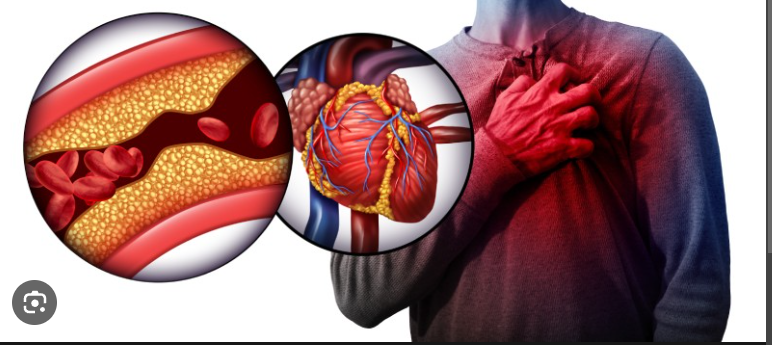
Symptoms
Many people envision a heart attack as it’s often shown in movies or on TV: chest-clutching pain followed by a collapse to the floor. While that can happen, it is far from typical. Most heart attacks begin with mild pain or discomfort. Heart attack symptoms can last for hours, days, or weeks. And, unlike with sudden cardiac arrest, the heart usually keeps beating during a heart attack.

The AHA lists the following symptoms that can suggest a heart attack is happening:
- Discomfort in the center of the chest that lasts more than a few minutes or that goes away and comes back. It can feel like uncomfortable pressure, squeezing, fullness, or pain.
- Pain or discomfort in other parts of the body, such as one or both arms, the back, neck, jaw, or stomach.
- Shortness of breath, with or without chest discomfort.
Symptoms for women
Women are more likely to notice some of the other symptoms, such as shortness of breath, nausea and/or vomiting, and back or jaw pain, even though they also experience chest pain or discomfort. Women frequently misdiagnose these as heart attack symptoms, believing instead that they are the result of less serious ailments like acid reflux, the common aches and pains associated with aging, or the flu. However, heart disease is the leading cause of death in the United States for both men and women, so these symptoms need to be taken seriously.

Prevention
Finding out what your risk factors are is the best way to avoid a heart attack. You have little control over some factors, like age (risk increases with age), gender (men are more at risk than women), ethnicity (some Asian Americans, Native Hawaiians, African Americans, Mexican Americans, and American Indians are more at risk), and family history. On the other hand, you have direct control over others. According to the American Heart Association, you should:

- Don’t smoke, and if you do, quit right away.
- Control blood pressure and cholesterol levels.
- Keep diabetes under control.
- Maintain a healthy body weight.
- Engage in physical activity.
- Eat a heart-healthy diet.
- Keep stress under control.
Also read-Congenital Heart Disease : A Patient’s Guide To Congenital Heart Disease And Its Symptoms
images source: Google
Disclaimer: The opinions and suggestions expressed in this article are solely those of the individual analysts. These are not the opinions of HNN. For more, please consult with your doctor.




































